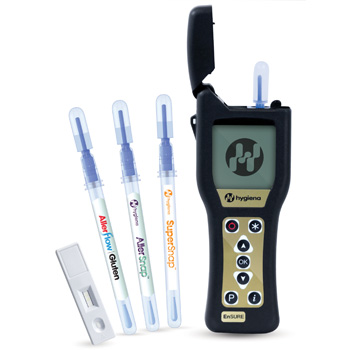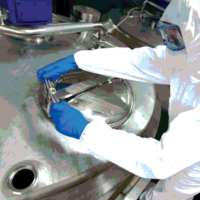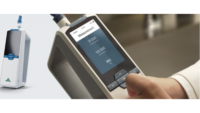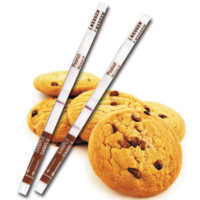Every 3 minutes, a food allergy reaction sends someone to the emergency department—around 200,000 emergency department visits per year. Every 6 minutes, the reaction is one of anaphylaxis (i.e., life threatening). In order to protect food-sensitive individuals, food processors are required to place warning labels on food products to ensure quality assurance (QA) procedures reduce the risk of cross-contamination from production processes and raw materials. These QA procedures include Good Manufacturing Practices (GMPs) and the implementation of Hazard Analysis and Critical Control Points (HACCP), together with their respective prerequisite programs, all within an effective quality management system. Effective cleaning is part of GMPs and is usually identified as a prerequisite for HACCP. In addition, cleaning is often considered a CCP for allergen control; thus, methods to monitor and verify cleaning are required. Allergens are a very specific and very small component of foodstuffs, and the purpose of cleaning is to reduce any food residue on product-contact surfaces to an acceptable level. There are several methods to validate and verify cleanliness that have been established and proven by industry for decades, including high sensitivity, broad-spectrum tests. So how do you verify cleaning effectively reduces risk and exposure to allergens within a reasonable budget?
There are several methods for the detection of specific allergens, of which immunological methods such as quantitative plate enzyme-linked immunosorbent assay (ELISA) tests and qualitative lateral flow devices (LFD) are the most commonly used. Plate ELISA tests are more sensitive, costly, time-consuming and require a skilled analyst whereas LFD are more convenient and faster but have less sensitivity. A new and improved LFD kit from Hygiena, AllerFlow Gluten, is conveniently designed for ease-of-use, affordably priced and can detect specific allergens in 10 minutes. Specific detection methods alone give partial information about overall safety and risk. They should be used initially and on a regular basis for validation of allergen removal but are not ideal for daily cleaning verification. The U.S. Food and Drug Administration and quality schemes such as Safe Quality Foods recognize the use of ELISA technology as a suitable test method for allergen control but also acknowledge that other alternative methods such as adenosine triphosphate (ATP) bioluminescence and protein tests should be used for verification of overall cleaning effectiveness.
Allergens are glycoproteins that are just one very specific component of foods. Potentially allergenic foods are composed of other components that are present in higher quantities and are easier to detect at very low levels. For example, ATP is a component of all foods, and high-sensitivity ATP methods offer an effective alternative. ATP testing provides a direct objective test of cleaning efficacy that has been well-established for over 30 years. There have been many advances in ATP systems in recent years to make it simpler, more robust, sensitive and cost-effective. The EnSURE instrument and SuperSnap ATP swab from Hygiena provide high sensitivity with low background noise and low variation for consistently high-performance results, making it possible to detect extremely low levels of food residues. SuperSnap provides a simple, convenient, objective, instant test that can be used in production environments by nonskilled staff to facilitate immediate corrective action such as re-cleaning prior to conducting any additional, more expensive specific allergens tests. It thereby saves time, cuts costs and minimizes down time. In addition to ATP testing, high-sensitivity protein tests such as AllerSnap, also from Hygiena, can detect low levels of protein residue in 15 minutes with a colorimetric swab. Nonspecific protein tests are widely used by the industry to verify cleaning and are well-established, proven methods of cleaning validation and verification. Together, ATP and protein tests indicate overall environmental cleanliness but not which type of protein is present. These surface environmental tests lack the specificity to detect the precise allergen but give more valuable information about general cleanliness and overall risk of a surface.
Using a combination of detection technologies gives comprehensive assurance and verification of cleaning procedures to minimize the hazards and risks from residual allergen contamination. Regular, high-sensitivity ATP monitoring and protein testing should be complemented by LFD and plate ELISA testing on a regular, yet less-frequent, basis in order to validate cleaning effectiveness while managing testing costs. The combined methods approach provides a more rapid, comprehensive and cost-effective program with greater assurance of cleanliness. For more information on the product solutions described above or to learn more about allergen cleaning verification methods, visit www.hygiena.com/allergens.
Practical and Holistic Allergen Cleaning Verification




